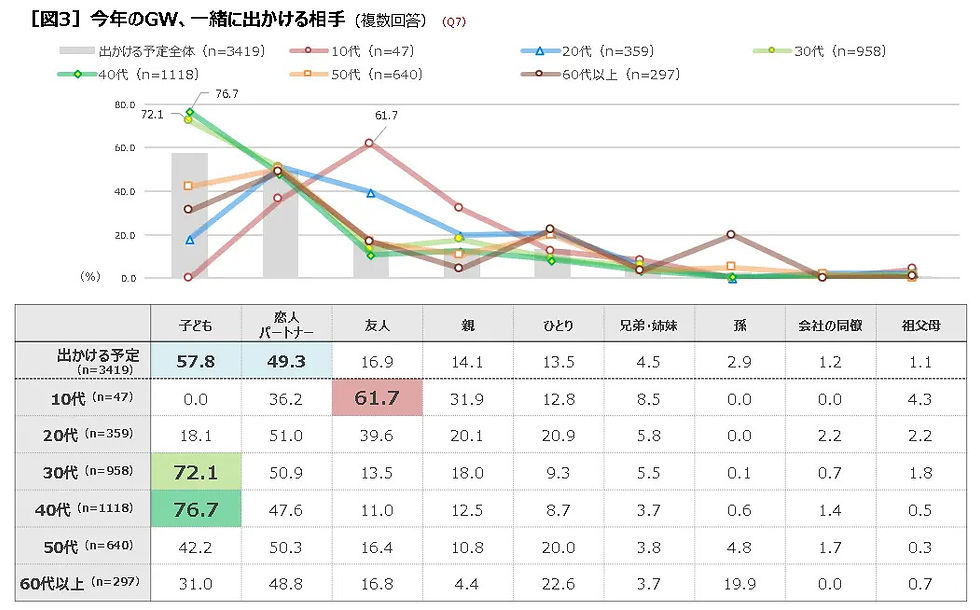2022 Golden Week in Japan: What do people do during the Golden Week 2022 ?
- ForeignConnect
- Apr 21, 2022
- 4 min read

What is Golden Week in Japan?
The Golden Week is a seven-day period that includes four national holidays. Golden Week, together with New Year and Obon week, becomes one of Japan's three biggest holiday seasons when combined with well-placed weekends.
The national holidays making up the Golden Week are:
April 29 Showa Day (Showa no hi): April 29 is the birthday of former Emperor Showa, who died in the year 1989.
May 3 Constitution Day (Kenpo kinenbi): The new postwar constitution went into force on this day in 1947.
May 4 Greenery Day (Midori no hi): Greenery Day used to be celebrated on April 29 until 2006. This day is dedicated to celebrate plants and environment in remembrance of the Showa Empire’s love for nature.
May 5 Children's Day (Kodomo no hi): On this day, parents celebrate the life of their boys. (The Girl's Festival is on March 3rd) Carp streamers (Koi-Nobori) are symbols of strength, power, and success in life, and are used by families to pray for their boys' health and future prosperity.
What do people do during the Golden Week?
Travel Industry
During the Golden Week, people travel. Many offices are closed during the GW though tourist places get busy. According to the JTB Corporation, the largest travel agency in Japan, before the Pandemic was declared, 2,494,0000 people traveled during the GW. Of these 24,940,000 people, 922,000 people went abroad. On average, people spent 35,900 Yen for domestic travel and 268,000 Yen for international travel. The total size of the travel expenditure for these 24,940,000 people reached 111 Billion Yen in 2019.
In the middle of the Pandemic, these numbers fell significantly. Compared to the pre-pandemic, there were only 9,500,000 people who plan to travel, which is equivalent to a 62% decrease. The size of the travel expenditure also decreased from 111 Billion Yen to only 3 Billion Yen in 2021.
However, the numbers are starting to increase this year again to 16,000,000 travelers and 5.5 Billion Yen sized market. The government is supporting the travel and tourism industry by hosting Go-To travel campaigns where they allow consumers to book transportation and accommodation at a discounted rate and give them coupons that they can use during their travel at local places. Between the loosened restrictions, vaccine availability, and the Go-To travel campaign, it is hopeful that the industry can start seeing a rise in traffic.

Activities people do during the Golden Week
Last few years, traveling internationally was not an option for many people when they planned their Golden Weeks. However, people are still going to places locally for the GW break. The same report from JTB reported that 3419 people, who participated in the survey, plan to go out with their kids, partners, friends, parents, siblings, grandkids, co-workers, and grandparents.
In summary, people who answered to go out with their kids recorded the highest for people in their 30s and 40s. (The answers from both exceeded 70%). People who answered partners were the highest for people in their 20s, 40s, and 50s (The answers from all age groups exceeded 50%). Finally, teenagers answered that they would go out with their friends the most at 61.7%.

The most popular places to go with kids are listed as theme parks, parks, zoos & aquariums, hot springs, BBQ & camping, fruit picking, gyms, shopping, museums, and food-eating trips in order. However, hot springs become the most popular destination for people who chose to go out with their partners, friends, and even by themselves.

Golden Week is a great time to take advantage of the Japanese consumer’s psychology in wanting to get out of the house. In this period of time, people are looking for places to go and things to discover in normal circumstances. This holiday can be an especially great window of time to reach parents that are 30s and 40s with 2-3 years old kids as they are likely the ones that plan to take out their kids during the Golden Week and be active outside of their homes. Companies should also be mindful of how to engage with this audience by considering the unique consumer psychology this holiday creates. In this particular event, hosting an outside event approach could be an interesting and engaging way to connect with these audiences.
As a matter of fact, Twitter Japan launched a brand activation campaign during the Golden Week targeting Children’s Day.
Twitter Brand Activation Campaign

In this campaign, Twitter asked parents to share their stories with their kids with hashtags #こどもの日 #親バカ部
こどもの日 hashtag indicates the Children’s Day campaign. 親バカ部 hashtag is also often used by parents to make posts about their kids. The word translates to "stupid parents club" (stupidly kids loving parents club).
Twitter announced that they were giving away 10 packs of a teddy bear, backpack, and hand spinner to selected people.
They had also launched collaborations with anime creators.
・ぎゅうにゅうさん(@gyuunyuu_umai)
・横山了一(@yokoyama_bancho)
・吉本ユータヌキ(@horahareta13)
During the campaign, these animators also posted anime related to children’s day.
Finally, from 5/4 - 6/30 parents who posted their campaign posts with a こどもの日 hashtag saw special emoji at the end of the emoji.

Takeaway: This Twitter campaign is designed so that the platform could take a place in creating parents’ memories with their kids. The success of this campaign points to the fact that the company understood the cultural and psychological aspect of Golden Week: the time families seek opportunities to create memories, and crafted a campaign to align with audiences' behaviors around Golden Week.





Comments